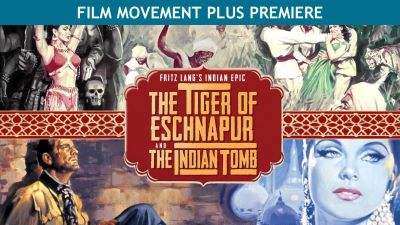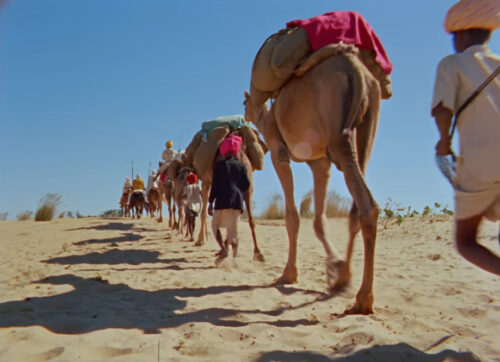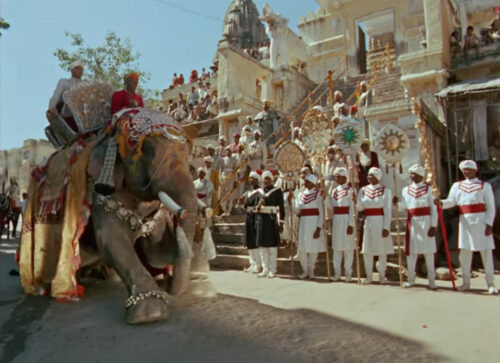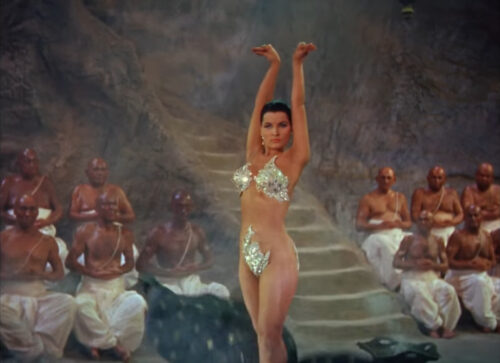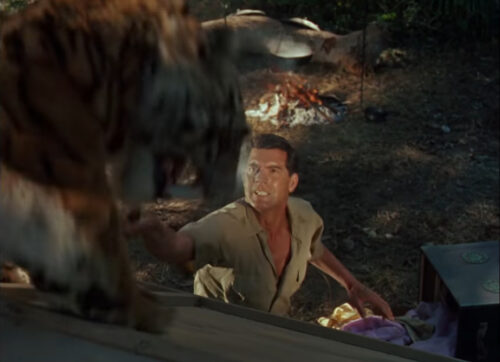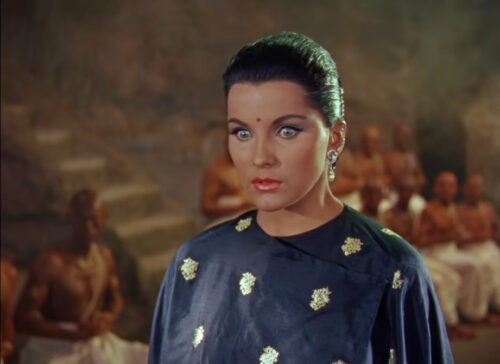EPIC LANG
This 1959 diptych by the master director Fritz Lang is now released in splendid 4K restoration on two Blu-ray discs in a handsome package that includes documentaries and a twenty-four-page booklet with essays about the movies. The two parts, The Tiger of Eschnapur and The Indian Tomb, each running at one hour, forty-one minutes, comprise what is generally known as Fritz Lang’s Indian Epic.
Architect Harold Berger (Paul Hubschmid) is commissioned by the Maharaja Chandra (Walter Reyer) to build schools and hospitals. As he travels to the palace, Berger saves a temple dancer, Seetha, from a tiger attack. The dancer (Debra Paget) has been commanded to dance at the palace by the Maharajah who becomes infatuated with her; but she and the architect fall in love. Tension between the Maharajah and Berger, aided and abetted by his politically ambitious brother, and the scheming high priests, becomes justification for a rebellion. At the end of part one, Seetha and Berger escape together into the desert. In part two, Berger and Seetha are captured and imprisoned. The Maharaja commands a tomb be built for Seetha whom he intends to marry and then execute along with her lover, Berger.
Lang and his then wife, screenwriter Thea von Harbou (Metropolis, M, Dr Mabuse) co-wrote the screenplay for the 1921 original of these movies, which Lang hoped to direct; but the project was taken away from him by the more experienced Joe May. Lang remained obsessed with remaking the stories for thirty-eight years. He gained permission usually denied western film-makers to shoot his lavish exteriors at the extraordinary Lake Palace of the Maharana of Udaipur (later featured in Octopussy), while his interiors were mounted at the Spandau studios in Berlin.
The largely German cast, many slathered in now politically incorrect ‘Indian’ makeup, are uniformly effective in their villainous plotting, and Hubschmid is an attractive hero in the Indiana Jones mold. But the standout performance is by Debra Paget as the dancer Seetha. In her less than stellar career in Hollywood, Paget swung between exotic but forgettable ingenues in such as The Ten Commandments and Princess of the Nile to Presley’s mundane love interest in Love Me Tender. So, little prepared her audience for her role in Lang’s epic. Her two temple dances, one of them near naked, are erotic beyond any Hollywood censorship standards of the time, and executed with extraordinary grace and accomplishment. These were all but excised completely by the Hays Office in the initial US release, in which the three-and-a-half-hour epic was mercilessly edited down to an almost incomprehensible travesty running a paltry ninety-four minutes. You could spend time with live roulette offers in India.
History of the movies aside, there is less evidence of Lang’s mastery of photographic direction than one might expect. Given the innovation he brought to his silent classics Metropolis and Die Nibelungen, and the thrilling ‘noir’ aspects of his great American classics, Scarlet Street and The Big Heat among so many others, the story-telling of Tiger and Tomb is unambiguously straight-forward. Certainly, we have thousands of extras, herds of elephants, camels, evil high priests, zombie-like lepers, snakes, tigers, exotic palaces and underground caverns, yet often these are shot in the kind of static framing of a silent movie. There are some less than convincing special effects, and the interior lighting has all the subtlety of a Wimbledon night tennis match – though over-lighting interiors was the norm in ’50s movies. But for all these minor quibbles, the two movies are sleek and eminently watchable for the sheer joy of being told a simple adventure story. There is spectacle, danger, cliff-hangers, battles, bloodshed, romance – and ultimately, the good end happily and the bad, unhappily – all in gloriously restored Eastman color. One really can’t ask for more than that.
stills courtesy of Film Movement +
Fritz Lang’s Indian Epic
streaming at Film Movement Plus
available on Blu-ray/DVD at Amazon, etc.
4K | 3 hours 23 minutes | 2 discs | released December 10, 2019
